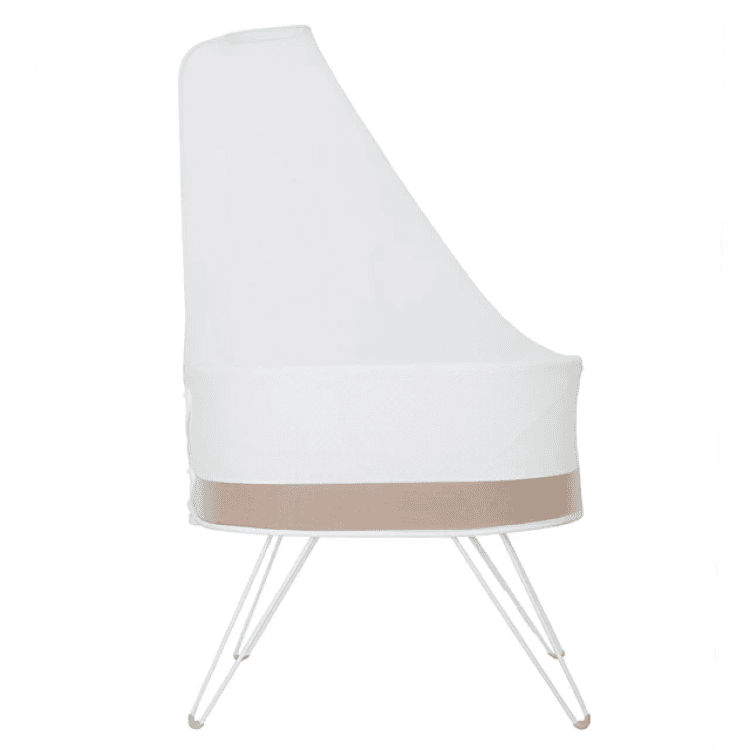No matter if you are an exercise devotee or a beginner, experts agree that it is important to stay healthy and active while expecting. In fact, it is recommended that pregnant individuals get at least 150 minutes of moderate intensity physical activity every week during pregnancy. Of course, depending on where you are on the fitness spectrum—and your pregnancy symptoms—these pregnancy exercise recommendations have the potential to make you feel discouraged or overwhelmed…but they do not have to! Keep reading to learn all you need to know about staying active—and safe—during pregnancy.
Is exercise safe during pregnancy?
For most people, yes, exercise is safe during pregnancy. “I do not like to use the word safe or unsafe, because it implies that exercise can be dangerous during pregnancy, which can induce fear and inhibit someone from starting to exercising,” says Gina Conley, MS, a birth doula, perinatal fitness trainer, and founder of MamasteFit, which offers antenatal and postnatal fitness programming, plus childbirth education.
While it is true that doctors used to worry that engaging in physical activity while expecting could result in low birth weight and premature birth, those notions are now outdated and false. Instead, Conley asserts that “not exercising during pregnancy actually causes more harm than exercising.” Moreover, research shows that reduced physical activity during pregnancy is actually linked to an increased risk of preterm birth.
When is it unsafe to exercise during pregnancy?
There are certain conditions that can make engaging in exercise during pregnancy unsafe. According to experts, you should refrain from exercise if you are experiencing any of the following:
Heart disease
- Lung disease
- Severe anemia
- Cervical cerclage (This is when the cervix is temporarily closed with stitches to prevent preterm birth.)
- Placenta previa after 26 weeks of pregnancy
- Preterm labor
- Preterm ruptured membranes
- Preeclampsia
- Carrying multiples while also at risk for preterm labor
- Vaginal bleeding
Benefits of Exercise During Pregnancy
Regular exercise during pregnancy benefits both you and your baby-to-be in so many ways! Here are just a few perks to breaking a sweat while expecting:
Reduces back pain. Carrying the extra weight of a baby can undoubtedly strain your back, causing lots of aches and ouches. But remaining active during pregnancy can strengthen and tone the muscles in your back, bum, and thighs, which can relieve backaches and improve posture.
- Eases constipation. A combo platter of pregnancy hormones and a full uterus pressing on your intestines makes it more difficult to push waste out of your body, causing bloating and constipation—which can lead to other issues, such as hemorrhoids. The good news? When you keep moving, so do your bowels!
- Lowers risk of gestational diabetes. Research shows that light-to-moderate exercise for 30 to 60 minutes three times a week during pregnancy can “significantly decrease the occurrence of gestational diabetes” in otherwise healthy individuals.
- Decreases risk of preeclampsia. “Aerobic activity 2 to 3 times a week for at least 30 minutes can almost half your risk of developing preeclampsia,” notes Conley.
- Increases chance of vaginal birth. Not only do experts note that regular exercise may decrease your risk of having a cesarean delivery, but research in the Journal of Obstetrics & Gynecology found that 22% of non-exercising parents-to-be delivered via c-section compared to 17% of those who did exercise.
- Moderate exercise can reduce the time it takes to fall asleep decrease the amount of time you lie awake in bed at night. For even more bang for your buck, the in America reports that morning exercise tends to help you fall asleep faster than evening exercise. (.)
How much should I exercise during pregnancy?
To squeeze in at least 150 minutes of moderate intensity exercise a week, break it down to 30-minute chunks of activity (plus warm up and cool down) throughout the week. “Alternatively, you could do about three to four days a week of 60-minute workouts, including warm up and cool down, to get in your weekly requirements,” says Conley. “This can be a combination of aerobic, resistance training, yoga—really any sort of movement that is at a moderate intensity.” But if you are brand new to exercise, it is a good idea to begin with as little as 5 minutes of exercise daily until you can stay active for 30 minutes a day.
Exercising While Pregnant: How to Prepare
Set yourself up for fitness success by planning ahead:
Drink plenty of water. Hydrate before, during, and after your workout. If you experience any signs of dehydration, like dizziness or a racing or pounding heart, it is time to pause and drink up.
- Dress comfortably. Consider trading your leggings and Spandex top for more loose-fitting workout clothes to avoid overheating. Do not forget a supportive sports bra.
- Stay inside when hot. It is important to avoid becoming overheated throughout pregnancy, but it is especially so in your first trimester. Beyond drinking water and wearing loose-fitting clothing, do not exercise outside on very hot or humid days. Instead, only work out indoors in a temperature-controlled environment.
- Consider a belly support belt. Later in pregnancy, a belly support belt may reduce discomfort while walking or running.
Best Exercises to Try During Pregnancy
Wondering, what exercise is safe during pregnancy? If you are healthy and you exercised before you became pregnant, it is usually safe to continue doing what you have been doing as long as you stick with moderate-intensity activities. But it is always smart to check with your healthcare provider first. You will know your exercise of choice is moderately intense if you can still carry on a normal conversation while doing it. These exercises can be low-impact (gentle, fluid movements that are easy on the joints) or high-impact, like jogging or aerobics, as long as the intensity remains moderate. Some beneficial exercises to do throughout pregnancy that hit this mark include:
Brisk walking
- Stationary cycling (Riding a standard bicycle during pregnancy can be risky if your growing belly affects your balance.)
- Dancing
- Swimming
- Water aerobics
- Antenatal Pilates
- Antenatal yoga
- Resistance exercises (weights, elastic bands, squats)
- Using an elliptical machine
If you are already an experienced runner or racquet-sports player, it is likely you can continue these activities during pregnancy, just discuss everything with your healthcare provider first.
Exercises to Avoid During Pregnancy
While a 2023 report from BMC Public Health found that folks often perceive resistance-based exercise using weights as unsafe for pregnant individuals, that is untrue. In fact, this type of activity is associated with increased energy and reduced fatigue during pregnancy. So, instead of avoiding resistance exercises, “you should avoid any exercise that you do not enjoy during pregnancy—and any activity that has a high fall risk,” says Conley. Activities where you could get hit in the belly or hit the water with great force should be off limits as well. Other activities and exercises that should be avoided in pregnancy include:
Bikram yoga (hot yoga)
- Contact sports, like hockey, boxing, soccer, and basketball
- Diving
- Downhill skiing
- Gymnastics
- Horseback riding
- Hot Pilates
- Off-road cycling
- Scuba diving
- Sit-ups (After the third month of pregnancy, lying flat on your back during exercise can cause your blood pressure to drop, limiting blood flow to your baby.)
- Skydiving
- Skating
- Surfing
- Water skiing
Exercising While Pregnant: Signs to Slow Down
It is critical to pay attention to your body and how you feel when you are exercising during pregnancy. Right now, your balance might be different, your joints are looser, your body temperature is slightly higher, and you may even feel short of breath at times, which means you may have to take a break or change your pregnancy exercise plan. “You wil want to modify your fitness routine in pregnancy, for example, if you experience abdominal coning, heaviness in the pelvic floor, or increased discomfort or pain,” says Conley. “Modifying could be as simple as lowering the weights or resistance, or as much as completely changing the exercise.” Either way, it is important to stop your activity—and call your healthcare provider—if you experience any of the following symptoms:
Calf pain or swelling
- Chest pain
- Contractions
- Feeling dizzy or faint
- Headache
- Muscle weakness
- Shortness of breath before starting exercise
- Vaginal bleeding or vaginal leakage
More on Having a Healthy Pregnancy:





















